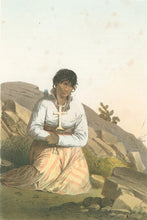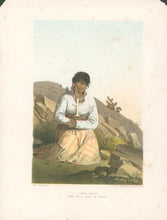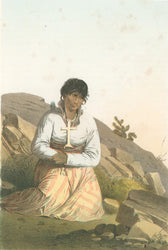Arthur Schott. “Toro-Mucho. Chief of a Band of Kioways." [Southern Plains]. From Report of the United States and Mexican Boundary Survey.
Washington: GPO, 1857. Ca. 8 x 5 1/2. Chromolithograph by Sarony, Major & Knapp. Scattered foxing in image and margins. Chips in upper right and left hand margin corners. Else, fine condition.
A print from a landmark work on the exploration of the American west. With the discovery of gold in California in 1849, the need for a transcontinental railroad route across the country became very apparent. With tensions growing between the North and South, Southerners lobbied for a route that passed through the South. The border with Mexico first established at the end of the Mexican-American War ran along the Gila River and unfortunately the only feasible southern route for a railroad ran through Mexico. This prompted renewed negotiations, resulting in the Gadsden Purchase, acquiring for the United States enough land to run the railroad line. William H. Emory, a topographical engineer who had previously done surveying in the southwest was appointed to survey the new border. Emory's report of the results of his survey included not only the geographic information and maps required, but much other information on the natural history and physical character of these newly acquired lands. Also in the report were a series of prints drawn by a number of artists, including Arthur Schott, a German-born scientist, artist and musician who was appointed as a "special scientific collector," to gather botanical, geological, and zoological specimens, as well as making notes and drawings of the land and its flora and fauna. Others of the important results were his first-hand images of the Indian tribes, including Seminole, Lipan Apache, Yumas, and Kiowa.





